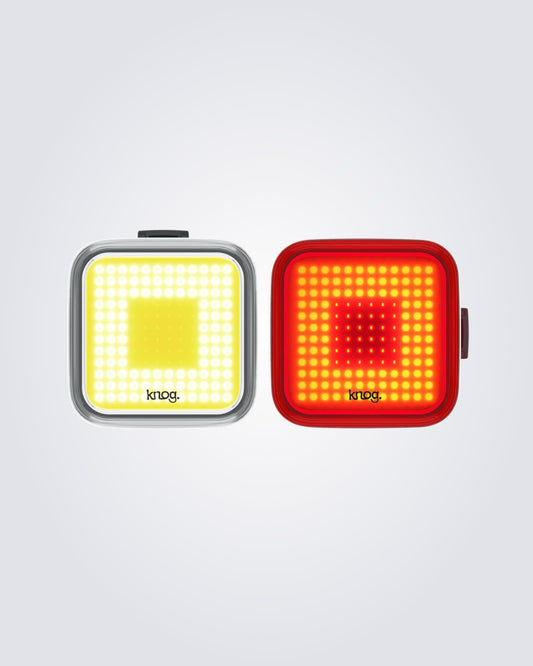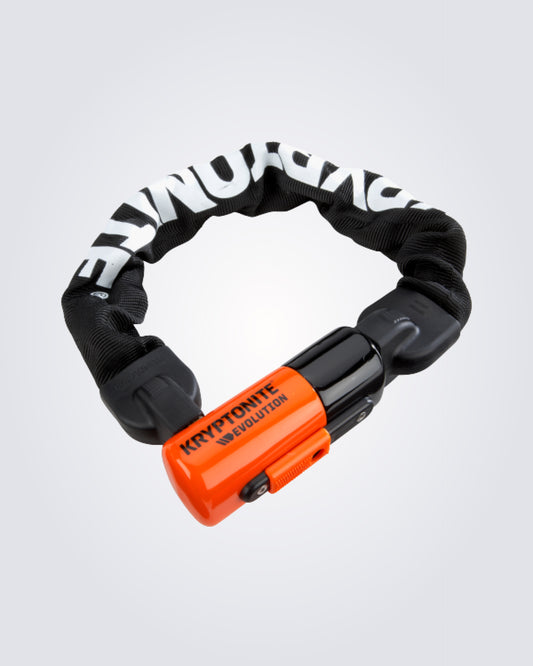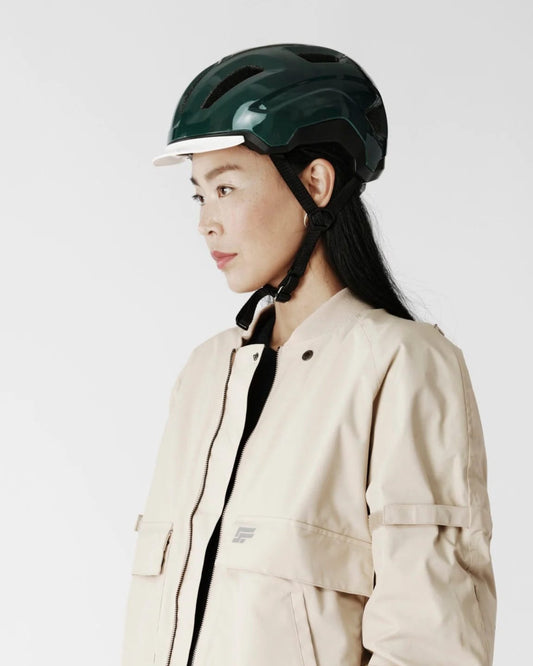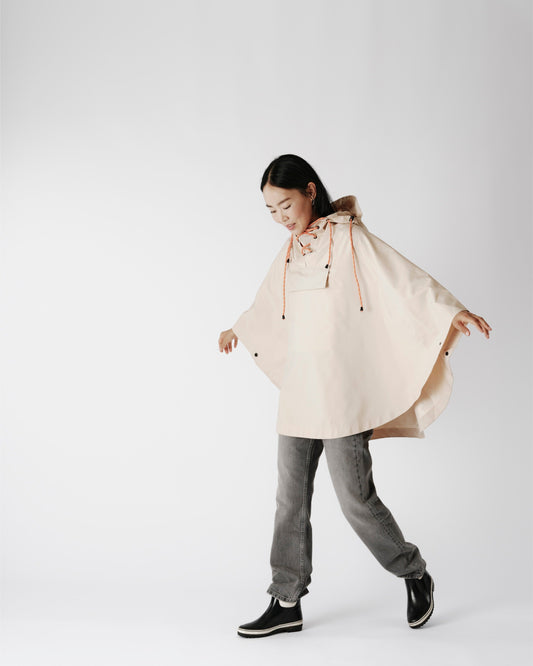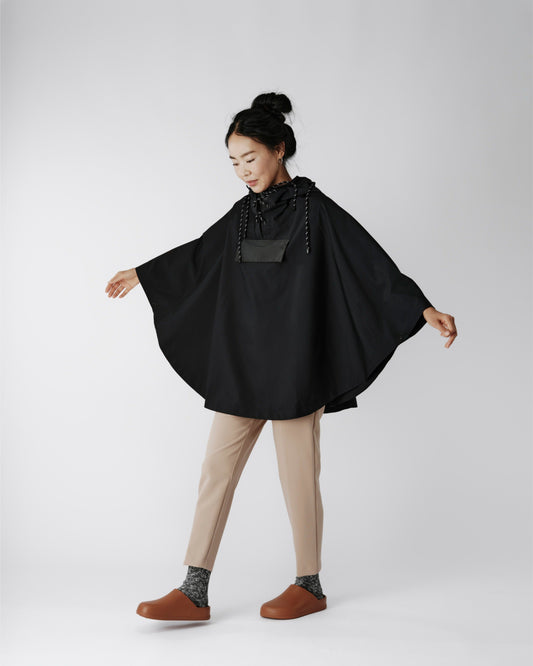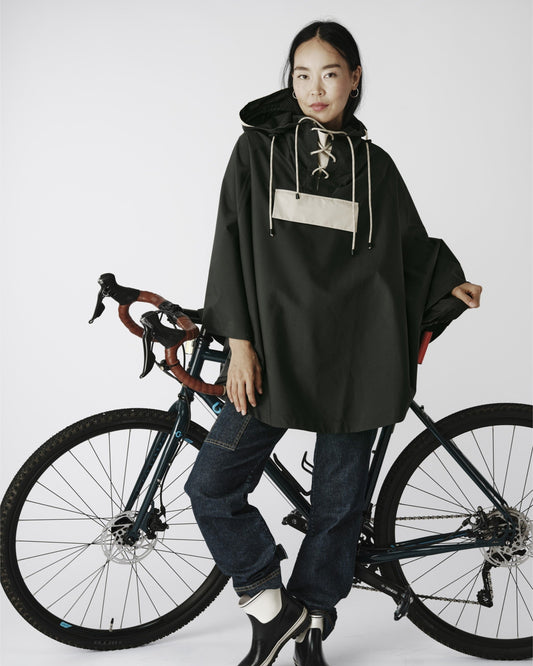What Size Bike Do I Need? Find Your Perfect Fit with This Guide
Choosing the right size bike is crucial for both comfort and efficiency. A bike that's too large or too small can lead to an uncomfortable ride and even injury. But with a variety of bike types and sizes available, it can be challenging to know where to start. The process begins with understanding basic bike sizing and how it correlates to your body measurements. Factors like height and inseam are crucial when determining the right bike size, whether you're eyeing a mountain bike, a road bike, or a hybrid.

If you're new to biking or are considering a different type of bike than you're used to, it might be beneficial to use a size chart. These charts are generally good starting points and take into account the variations between different styles of bikes. They can help you make a more informed decision before testing out bikes in person. Additionally, different age groups will require different bike sizes, and one should consider specific adjustments to achieve the perfect fit.
Key Takeaways
- Correct bike size enhances comfort and prevents injury.
- Height and inseam measurements are key to finding the right bike.
- Size charts provide a helpful starting point for selecting a bike.
Understanding Bike Sizing

Choosing the right size bike is crucial for both comfort and performance. One needs to consider their height, the bike's frame size, and specific measurements like reach and standover height to ensure a good fit.
Importance of Correct Bike Size
Getting the correct bike size is not just a matter of comfort; it directly affects one's riding efficiency and risk of injury. A bike that's too large or small can lead to poor ride handling and muscle strain. They need to match their height and inseam to the appropriate frame size, usually measured in inches or centimetres, which can typically be found in a bike size chart.
Terminology and Key Measures
When they're sizing a bike, there are a couple of key terms and measures they'll come across:
-
Frame Size: This is the length of the seat tube, measured from the center of the bottom bracket to the top of the seat tube. It's commonly expressed in inches for mountain and hybrid bikes, and centimeters for road bikes.
-
Height: A rider's total height is the starting point in finding the correct bike size.
-
Inseam: The length from their crotch to the ground is critical for determining standover height, which is the clearance between the bike frame and their crotch when standing with feet flat on the ground.
-
Top Tube: The horizontal tube at the top of the frame determines the bike's reach, which is the distance from the saddle to the handlebars.
-
Reach: This measure is critical for ensuring they won't be overstretched when holding the handlebars or too cramped, which could affect steering and control.
Understanding these terms will help them find the right-sized bike, be it a road bike, mountain bike, or any other type. Accurate measurement of each component is essential to find a comfortable and efficient fit. For example, the Halfords UK bike size guide mentions correlating one's height and inseam to the ideal frame size. On the other hand, the Cyclists Hub bike size chart provides an example of calculating mountain bike size using inseam length. It's important to refer to these resources to make a well-informed decision.
Determining Your Body Measurements

Before choosing the perfect bike, one must know their body measurements accurately. These include inseam length, total height, and reach, which together help determine the most comfortable and efficient bike size.
How to Measure Your Inseam
To measure one’s inseam, they need to stand against a wall with their feet 6-8 inches apart. Place a book or rigid object between their legs, simulating a bike seat, and measure from the top of the object to the floor. This is their inseam length, or the inside leg measurement, crucial for calculating the appropriate bike frame size.
Calculating Your Reach
Reach is the distance from the end of one's fingertips to the other arm while standing straight with arms extended. It's essential for comfort and performance on the bike. To measure reach correctly, one must spread their arms horizontally and measure the distance from the fingertip of one hand to the fingertip of the other.
Using the Ape Index
The Ape Index is a measure comparing an individual's arm span relative to their height. One can calculate it by stretching arms out to the side and measuring from fingertip to fingertip. Then they must subtract their overall height from this measurement. A positive index means their arms are longer than their height, which may influence the reach measurement on a bike.
Bike Types and Their Sizes

When it comes to selecting a bike, the type you choose should fit both your riding style and your body size. Each bike type has its own sizing parameters that ensure a comfortable and efficient ride.
Road Bikes
Road bikes are designed for speed and efficiency on paved surfaces. They typically feature a lightweight frame and narrow tires. Sizes can range considerably, but a standard measurement used by many riders is the inseam length multiplied by 0.70. For instance, a person with a 33-inch inseam might find that a road bike size of around 23 inches (58cm) is appropriate.
Mountain Bikes
Mountain bikes are built for off-road trails and rugged terrain. These bikes require more clearance over the top tube for better maneuverability and control, which means the frame size can be smaller than a road bike for the same individual. A common sizing formula is an inseam length multiplied by 0.66. Therefore, someone with a 33-inch inseam may need a mountain bike that's around 22 inches (56cm).
Hybrid Bikes
Hybrid bikes blend features from road and mountain bikes to provide a versatile option that's comfortable on both streets and light off-road paths. They have a more relaxed frame geometry, providing a comfortable upright riding position. Hybrid bike sizes are generally similar to road bikes but can accommodate a slightly wider range of body sizes due to their adjustable components like seat post height and handlebar stem.
Using Size Charts for Guidance

When picking out a bike, using a size chart is crucial to finding the right fit. Bike size charts help translate your body measurements into the correct bike frame size, ensuring comfort and efficiency.
Interpreting Road Bike Size Charts
Road bike size charts typically show a correlation between your height and the bike frame size, which is often measured in centimeters. To use the chart properly, one needs to match their height range with the appropriate frame size. An individual's inseam length is another vital measurement that should correspond with the standover height of the bike.
Mountain Bike Size Charts
Mountain bike sizing differs slightly from road bikes because of their design for rugged terrain. One can follow a mountain bike size chart by comparing their height to the frame size listed in inches. For example, a person with a 33-inch inseam might comfortably ride a 19-inch mountain bike frame, which allows for optimum control and maneuverability on trails.
Hybrid Bike Sizing
Hybrid bikes blend road and mountain bike features, hence the sizing can be a mix of the two. A hybrid bike size chart usually offers recommendations based on height and inseam measurements, with a concern for the reach and standover height as well. It's important to consider that these bikes are meant for comfort during long rides, so ensuring a fit that avoids overstretching is key.
Age Specific Bike Sizing

When selecting a bike, one's age is a significant determinant as it influences the size and type of bike that best suits an individual. Children typically require smaller bikes with specific wheel sizes, while adults need to consider factors such as frame size and riding style.
Kids Bike Sizes
For children, bikes are generally sized by wheel diameter and matched to age ranges to ensure a comfortable and safe riding experience. For instance, toddlers often start with bikes that have 12-inch wheels. As they grow, the wheel size increases, typically in two-inch increments, to match their height and ability. For example, kids around age 5 might ride on a 16-inch bike, while pre-teens around age 10 could transition to a 24-inch bike. The appropriate wheel size ensures the child can handle the bike confidently and reach the ground easily.
Adult Bike Considerations
Adult bikes, in contrast, focus on frame size rather than wheel diameter. An adult’s bike size is typically measured by the frame, which should match a person's inseam length and overall height. A person who is 6 feet tall with a 36.5-inch inseam might look for a 20-inch (Large) or 21-inch (X Large) frame, depending on the type of bike and personal comfort. It's also essential for adults to recognize that sizes can vary considerably between manufacturers. Therefore, it is sometimes recommended that one examines their Ape Index, which is a comparison of arm span to height, to choose a frame that offers the optimum reach and comfort for their specific body dimensions.
Adjusting Your Bike for Perfect Fit

Achieving the perfect fit on a bike is not just about comfort; it's also about efficiency. Adjusting the saddle height and handlebar position can make a significant difference in the riding experience.
Setting the Saddle Height
The saddle height is crucial for a comfortable and efficient ride. The rider should be able to reach the pedals without overextending their legs or rocking their hips. To set the saddle height, they should stand next to the bike and adjust the saddle to hip level. Once on the bike, their leg should have a slight bend — about 70-90% extension — when the pedal is at its lowest point. For a precise measurement, consider a bike fit guide.
Fine-Tuning the Handlebar Position
The handlebar position affects a rider's reach, comfort, and control. For a comfortable ride, the handlebars should allow for a slight bend in the elbows when they lean forward. Adjust the handlebar height and reach so that they can comfortably grasp the handlebars without straining their back, neck, or shoulders. Aligning handlebar height with the saddle can provide a starting point, but adjustments may be necessary based on individual preferences and riding style.
How Riding Style Affects Sizing

When selecting a bike, they'll find that the riding style heavily influences the sizing. Whether one is aiming for peak performance or paramount comfort, each riding preference dictates a different approach to finding the perfect bike size.
Sizing for Performance
For those with a penchant for performance, bike size becomes a crucial factor for maximum efficiency and speed. A tighter frame can offer better power transfer, agility, and a lower weight—a combination conducive to competitive cycling. Road cyclists often choose a smaller frame to facilitate a more aerodynamic position, reducing drag and boosting speed. For instance, a mountain biking enthusiast aiming for agility on trails might select a size that provides a more maneuverable bike.
Comfort-Oriented Sizing
On the flip side, riders seeking comfort may prefer a bike that provides a more upright posture. This is common for leisure and commuter cyclists where comfort takes precedence over speed. They might also look for a bike with a larger frame, which can offer a relaxed fit, allowing for a more comfortable ride over longer distances. This relaxed geometry means less strain on the joints and can improve stability, making it a favored choice for long rides or touring.
Avoiding Common Sizing Mistakes

When choosing a bike, it's essential to avoid sizing mistakes that can lead to discomfort and even injuries. The key points to focus on are ensuring proper clearance and the importance of test rides.
Ignoring the Importance of Clearance
Riders often overlook the need for adequate clearance between themselves and the bike frame. This clearance—especially around the bottom bracket—is crucial to ensure safe and comfortable riding. For mountain bikes, a good rule of thumb is to have at least 2-3 inches of clearance over the top tube when standing flat-footed on the ground. For road bikes, the clearance should be 1-2 inches.
Overlooking the Importance of Test Rides
Many potential buyers don't realize the importance of taking a bike for a test ride at local stores before purchasing. A test ride can reveal a lot about the bike's size and how it suits an individual's riding style. During a test ride, attention should be paid to reach, handlebar height, and comfort of the saddle. Riding different models can greatly aid in finding the bike that feels just right.
Frequently Asked Questions

Choosing the right bike size is crucial for comfort and performance. These FAQs will guide riders through the process of selecting an appropriate bicycle.
How do I choose the right bike size for my height?
A rider's height is the primary factor to consider when selecting a bike size. Generally, they should compare their height to a sizing chart to find a suitable frame size. The correct bike size allows for efficient pedaling and comfortable reach to the handlebars.
Can you recommend a bike size chart that's based on rider height?
Certainly, there are comprehensive charts that match rider height to bike frame size. Tredz Bikes, for instance, offers a detailed bike size guide that includes different types of bikes and is a good starting point.
How do I determine the appropriate bike size for a kid?
For kids, bike sizing is often based on wheel size rather than frame size. It's essential to ensure the child can safely mount, dismount, and touch the ground with their toes when seated. Check out guidelines like Halfords' Guide to Kids' Bike Sizes for more detailed information.
What's the best way to measure a bike frame to fit me?
One can measure a bike frame by noting the length of the seat tube. Adult bikes are typically measured from the center of the bottom bracket to the top of the seat tube. For a visual guide on how to do this, Bicycle Guider offers insights on bike size charts.
Is there a difference between adult and children bike sizing?
Yes, adults' bikes are sized by frame, measured in centimeters or inches, while children's bikes are often given by wheel size. This distinction is because children grow quickly, and wheel size gives a better idea of what size bike will be a good fit for their current stage of growth.
What does a 26 inch bike refer to in terms of rider height?
A 26 inch bike usually refers to the wheel size, which is a standard size for adult mountain bikes. While it doesn't directly correlate to rider height, it typically fits adults around 5' to 5'7". The inseam length is also important to consider, which you can learn more about from Cyclist's Hub bike size chart.
